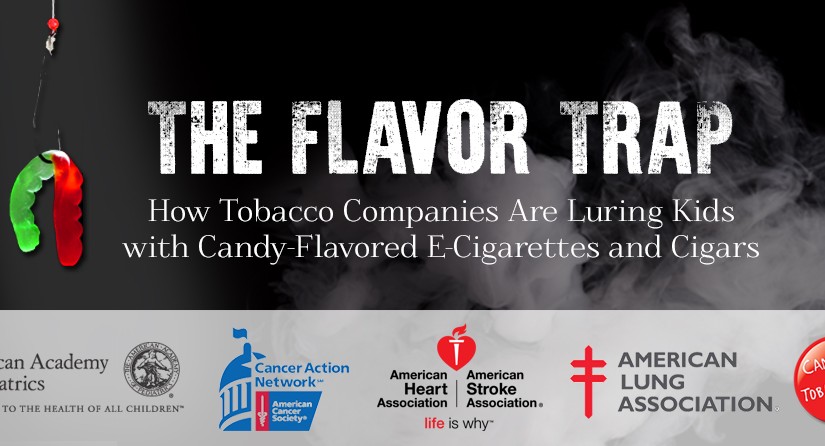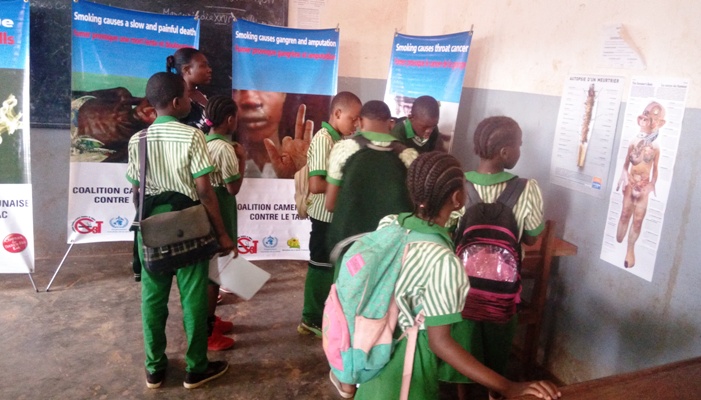Sorry, this entry is only available in Français.
Archives: Slid Show

Sorry, this entry is only available in Français.

Some 30 journalists and communicators in Yaoundé last Wednesday 22nd March, 2017 engaged in discussions on tobacco control issues in Cameroon. In a media dialogue organized by the Cameroonian Coalition for Tobacco Control (C3T) at the Jouvence 2000 Hotel, the journalists who came from the audiovisual, print and online media exchanged ideas on the dangers of tobacco consumption and the need to protect Cameroonians from these dangers.
Amongst other things, the journalists discussed the importance of adopting regulations on Graphic Health Warning labels (GHWs), as well as a comprehensive tobacco advertising, promotion and sponsorship ban in the country as ways of protecting citizens. During the discussions, the journalists agreed that the tobacco industry interferes with the current regulations in the country.
They saw the need to adopt a national tobacco control law that takes care not only of GHWs and a ban on tobacco advertising, promotion and sponsorship, but also the affordability of tobacco products (through tax increases) and the protection of passive smokers (through the creation of smoke-free environments).
After receiving statistics on the mortality of tobacco products in Cameroon, the communication experts expressed satisfaction with the quality of the media dialogue. They left the Media Dialogue venue ready to give a stronger push to the tobacco control fight in Cameroon.

In recent years, there has been an explosion of flavored non-cigarette tobacco products on the market, especially electronic cigarettes and cigars. These flavored products are undermining the world’s overall efforts to reduce youth tobacco use and putting a new generation of kids at risk of nicotine addiction and the serious health harms that result from tobacco use.
About the Report
A 2009 US federal law, the Family Smoking Prevention and Tobacco Control Act, prohibited the sale of cigarettes with characterizing flavors other than menthol or tobacco, including candy and fruit flavors. However, this prohibition did not apply to other tobacco products. In recent years, tobacco companies have significantly stepped up the introduction and marketing of flavored non-cigarette tobacco products, especially electronic cigarettes (e-cigarettes) and cigars.
This report documents the widespread availability of these flavored other tobacco products and the scientific evidence demonstrating that flavors play a critical role in the popularity of these products among youth. These flavored products are undermining the nation’s overall efforts to reduce youth tobacco use and putting a new generation of kids at risk of nicotine addiction and the serious health harms that result from tobacco use.
This report’s key findings include:
- In recent years, there has been an explosion of sweet-flavored tobacco products, especially e-cigarettes and cigars.
- These sweet products have fueled the popularity of e-cigarettes and cigars among youth.
- Studies show that flavors play a major role in youth use of tobacco products such as e-cigarettes and cigars.
- Tobacco companies have a long history of developing and marketing flavored tobacco products as “starter” products that attract kids.
- Strong FDA regulation is needed to protect kids from flavored tobacco products.
Key Findings
In recent years, there has been an explosion of sweet-flavored tobacco products, especially e-cigarettes and cigars.
These products are available in a wide assortment of flavors that seem like they belong in a candy store or ice cream parlor – like gummy bear, cotton candy, peanut butter cup, cookies ‘n cream and pop rocks for e-cigarettes and chocolate, wild berry, watermelon, lemonade and cherry dynamite for cigars. A 2014 study identified more than 7,700 unique e-cigarette flavors, with an average of more than 240 new flavors being added per month. Sales of flavored cigars have increased by nearly 50 percent since 2008, and flavored cigars made up more than half (52.1 percent) of the U.S. cigar market in 2015, according to Nielsen convenience store market scanner data. Further, the number of unique cigar flavor names more than doubled from 2008 to 2015, from 108 to 250.
These sweet products have fueled the popularity of e-cigarettes and cigars among youth.
While there has been a steep drop in youth use of traditional cigarettes, overall youth use of any tobacco product has remained steady in recent years due to the popularity of tobacco products like cigars and e-cigarettes – products that are predominantly flavored. From 2011 to 2015, current use of e-cigarettes among high school students increased more than ten-fold – from 1.5 percent to 16 percent – according to the National Youth Tobacco Survey (while the 2016 Monitoring the Future survey shows the first evidence of a decline in youth use of e-cigarettes, it also shows that e-cigarettes continue to be the most popular tobacco products among kids). In addition, more high school boys now smoke cigars than cigarettes – 14 percent vs. 11.8 percent.
Studies show that flavors play a major role in youth use of tobacco products such as e-cigarettes and cigars.
A government study found that 81 percent of kids who have ever used tobacco products started with a flavored product, including 81 percent who have ever tried e-cigarettes and 65 percent who have ever tried cigars. Youth also cite flavors as a major reason for their current use of non-cigarette tobacco products, with 81.5 percent of youth e-cigarette users and 73.8 percent of youth cigar users saying they used the product “because they come in flavors I like.”
Tobacco companies have a long history of developing and marketing flavored tobacco products as “starter” products that attract kids.
Flavors improve the taste and reduce the harshness of tobacco products, making them more appealing and easier for beginners – often kids – to try the product and ultimately become addicted. Since most tobacco users start before age 18, flavored tobacco products play a critical role in the industry’s marketing playbook. Flavors can also create the impression that a product is less harmful than it really is.
Strong FDA regulation is needed to protect kids from flavored tobacco products.
After years of delay, the U.S. Food and Drug Administration (FDA) in 2016 issued new rules for previously unregulated tobacco products, including e-cigarettes and cigars. Despite the strong evidence that flavored tobacco products are attracting and addicting a new generation of kids, legislation has been introduced in Congress that would greatly weaken FDA oversight of e-cigarettes and cigars, including the many candy-flavored products on the market. Congress should reject these proposals. In fact, the FDA should strengthen its rules by banning all flavored tobacco products.

Bertoua, the headquarters of the East Region of Cameroon, is a small town that leads to neighboring countries like the Central African Republic. The town may be small in size, but it is a giant in terms of tobacco cultivation. Bertoua hosts the Federation of Tobacco Planters in Cameroon, the FPTC. It is naturally a town with one of the highest tobacco consumption rates in the country.
The C3T Media Dialogue Team visited the Government Bilingual High School Bertoua to sensitize students on the disadvantages and dangers of tobacco cultivation and consumption.
It's 10 am on Thursday 23rd February, 2017 and students of GBHS Bertoua are excited to receive the C3T Media Dialogue Team in their institution. About 100 of them sit in an open space and discuss as the C3T team unpacks right before them, posters of graphic images on the dangers of tobacco consumption. Many more students get attracted to the site and before long, a great multitude is being sensitized on the dangers of tobacco consumption.
The sensitization lasts about 30 minutes and the students are given the opportunity to ask questions or air out any doubts they may have. In all these discussions, the students had similar concerns; ban the production and importation of tobacco and its products if it is as dangerous as portrayed. The students finally have all their doubts cleared and the Media Dialogue Team goes ahead to sensitize students in 2 other classrooms. By midday, the team leaves the campus happy to have accomplished one of its missions in Bertoua.

As Cameroon commemorates the 2017 edition of the National Youth Day, a cross section of the youth in Ngoumou, Mefou & Akono Division of the Centre Region of Cameroon were on Thursday 9th February, 2017, exposed to C3T posters showing graphic images of the consequences of tobacco consumption.
This was in an exposition event organized at the premise of the Ngoumou Municipal Council. The event brought together youths of different institutions around Ngoumou who showcased their skills in cookery and handicraft.
The high point of the event was the arrival of the Senior Divisional Officer of the Mefou and Akono Division Mr. Embe David. Accompanied by his first assistant, the SDO had a guided tour of the stands present, including C3T Graphic Health Warning posters.
The administrative officials were also sensitized on the need to stop all forms of tobacco advertising, promotion and sponsorship around schools in the area, as well as the need adopt regulations for a smoke free environment.
